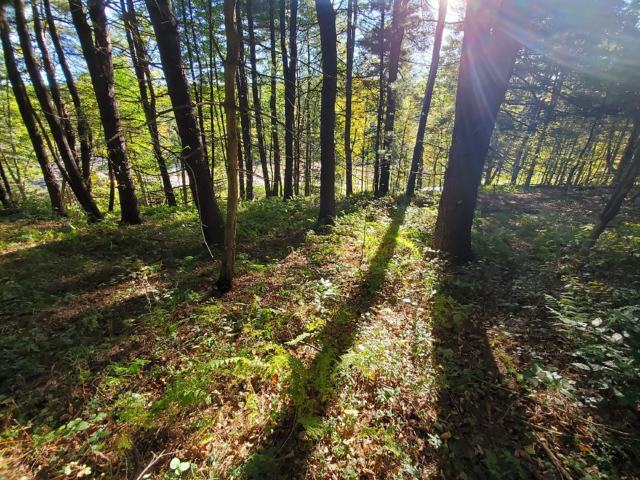Updated Phase I Standard for Forestland and Rural Properties

On March 12, 2024, the United States Environmental Protection Agency (US EPA) issued a draft ruling to approve the ASTM International E2247-23 Standard Practice for Environmental Site Assessments: Phase I Environmental Site Assessment Process for Forestland or Rural Property. This draft indicates that E2247-23 meets the requirements for conducting all appropriate inquiries under the Comprehensive Environmental Response, Compensation, and Liability Act. Additionally, as part of the US EPA’s draft ruling, it was specified that the previous standard—issued in 2016—would no longer be recognized as meeting all appropriate inquiries after one year.
Issued in December 2023, the E2247-23 Standard is an update to the previous standard from 2016. The new standard elevates many components for completing Phase I Environmental Site Assessments for forestland and rural land and creates consistency between the previously approved E1527-21 Standard, which is more commonly utilized for Phase I Environmental Site Assessments for Commercial Real Estate. Essentially, E2247-23 provides the following relevant updates:
- Updated definitions of Recognized Environmental Conditions, Controlled Recognized Environmental Conditions, and Historical Recognized Environmental Conditions.
- Introduction of Significant Data Gaps as a concept to be discussed within the findings of the Phase I Environmental Site Assessment.
- Introduction of Property Use Limitations as a general term to cover restrictions on current or future use of a property when contamination is allowed to remain on-site at levels above unrestricted use criteria. Property Use Limitations will generally be noted in conjunction with an identified Controlled Recognized Environmental Condition.
- Introduction of emerging contaminants as a non-scope item with the Phase I Environmental Site Assessment.
- Identification of Standard Historical Sources to be reviewed as part of every Phase I Environmental Site Assessment. Specifically, the Standard Historical Sources to be reviewed under E2247-23 include aerial photographs and topographic maps along with the completion of interviews with current and past owners/operators (if possible). Other historical sources that may be reviewed at the discretion of the Environmental Professional include property tax, building department, zoning, and land use records; street directories; fire insurance maps; mineral, oil, and gas development maps; livestock dipping vat records; pesticide state records; and local news records.
The E2247 Standard recognizes that the research and inspection process for forested and rural land differs from a typical assessment of commercial real estate. Specifically, the E2247-23 Standard differs from the E1527-21 Standard by specifying that site reconnaissance activities should be completed following the completion of historical research and interviews so that any areas of environmental interest identified during research can be assessed as part of the site inspection. This process allows for an expedited site inspection where staff can focus their attention on the identified potential concerns (such as areas of potential dumping viewed in historical aerial photographs) and the most likely areas of opportunistic dumping (typically along roadways and paths), rather than spending significant time traversing as much of a large tract of land as possible.
The E2247-23 Phase I Standard is a suitable alternative for Phase I Environmental Site Assessments being completed on large tracts of forested, fallow, or agricultural land where it is unlikely that significant historical or regulatory information will be available. Nature conservancies, carbon sequestration organizations, solar developers, and any other entity contemplating the use or purchase of large tracts of rural land should consider the E2247-23 Standard Practice for Environmental Site Assessments: Phase I Environmental Site Assessment Process for Forestland or Rural Property as a viable alternative for due diligence for these property types.
Given the recent draft ruling by the US EPA with a targeted sunset date for the replaced 2016 standard, LaBella anticipates that the draft ruling will move forward with no adverse public comment. As such, we expect the ruling to be finalized shortly after the public comment period ends on April 11, 2024. In anticipation of the finalized ruling, LaBella has proactively started integrating the E2247-23 Standard into Phase I ESAs completed for forestland and rural properties. Following the issuance of the final ruling by the US EPA, LaBella will seamlessly transition to conducting all Phase I Environmental Site Assessments under E2247-23, ensuring full compliance with the recently updated standard.

About the Author
Dave Crandall, PGPhase I ESA Program Manager
As LaBella’s Phase I Program Manager, Dave is responsible for the oversight, training, and professional development of analysts and senior reviewer staff, as well as for the overall quality assurance/quality control of Phase I Environment Site Assessment, Transactions Screen, and Records Search with Risk Assessment (RSRA) due diligence reports. He also assists project managers with client interactions and business development activities.
Dave has been involved in over 10,000 due diligence projects ranging from undeveloped land and commercial properties to automotive repair facilities, gasoline stations, and large-scale industrial facilities. He has performed environmental due diligence services for attorneys, private entities/developers, municipalities, and various commercial lenders. In addition, Dave is experienced in environmental investigation and remediation techniques and offers his experience in these areas to assist clients in determining the best way to address potential environmental risks encountered through due diligence activities.